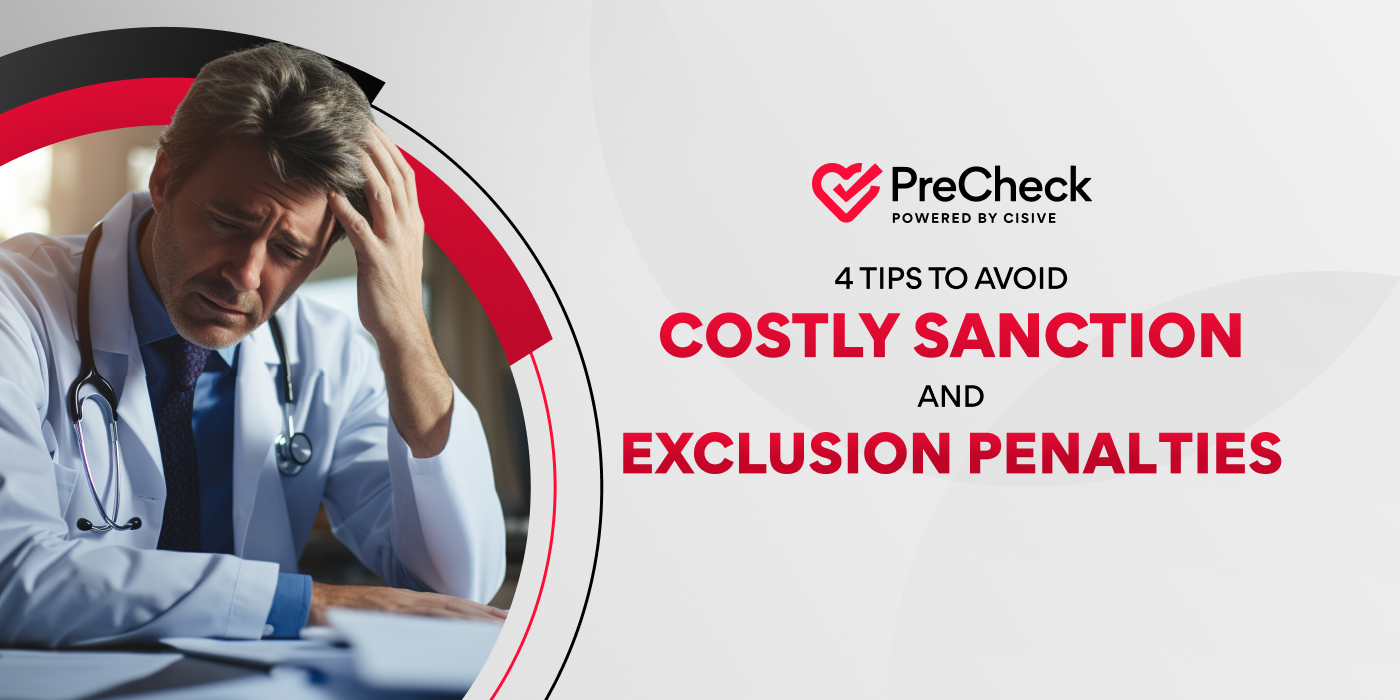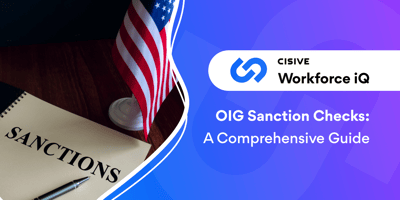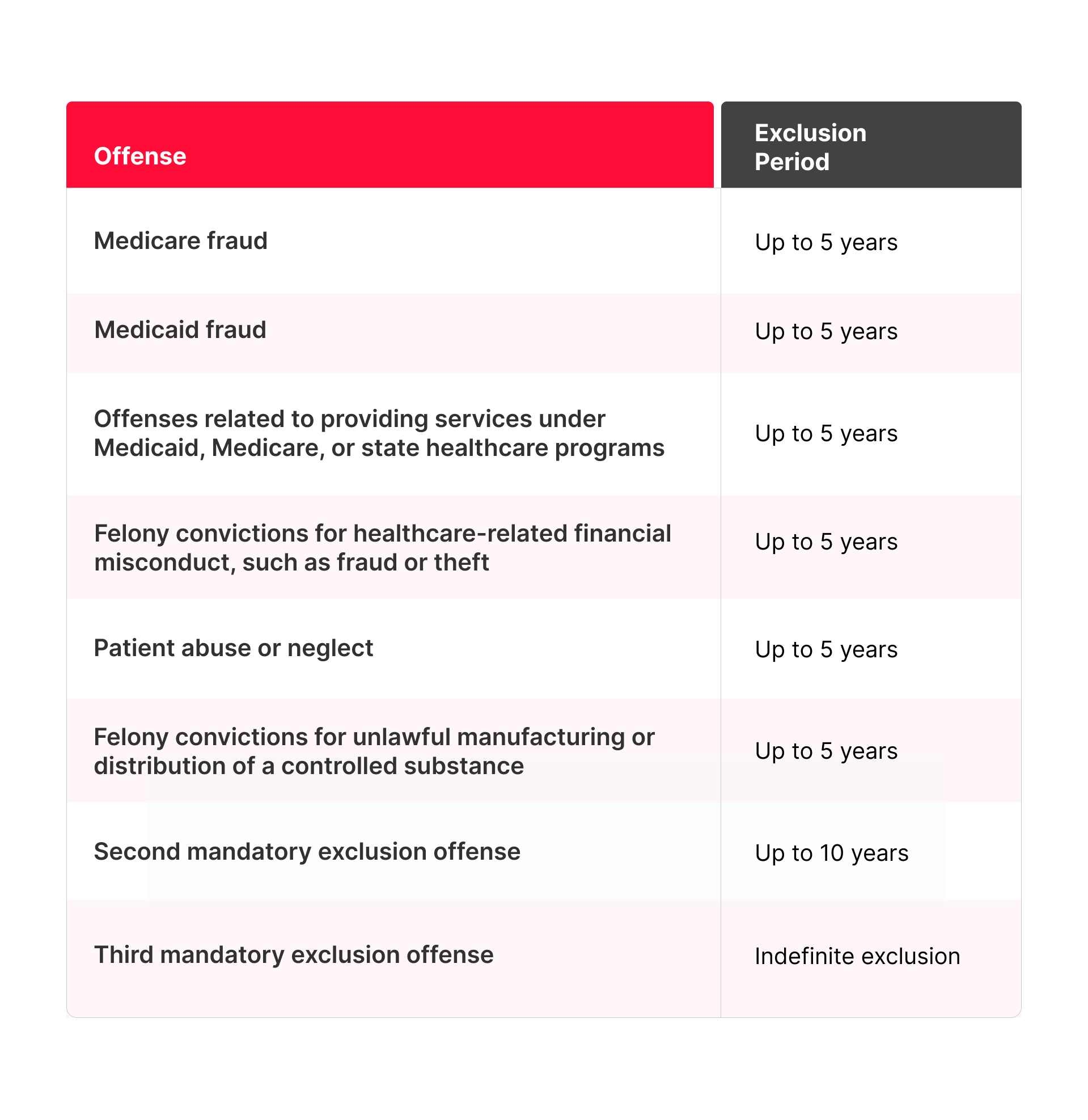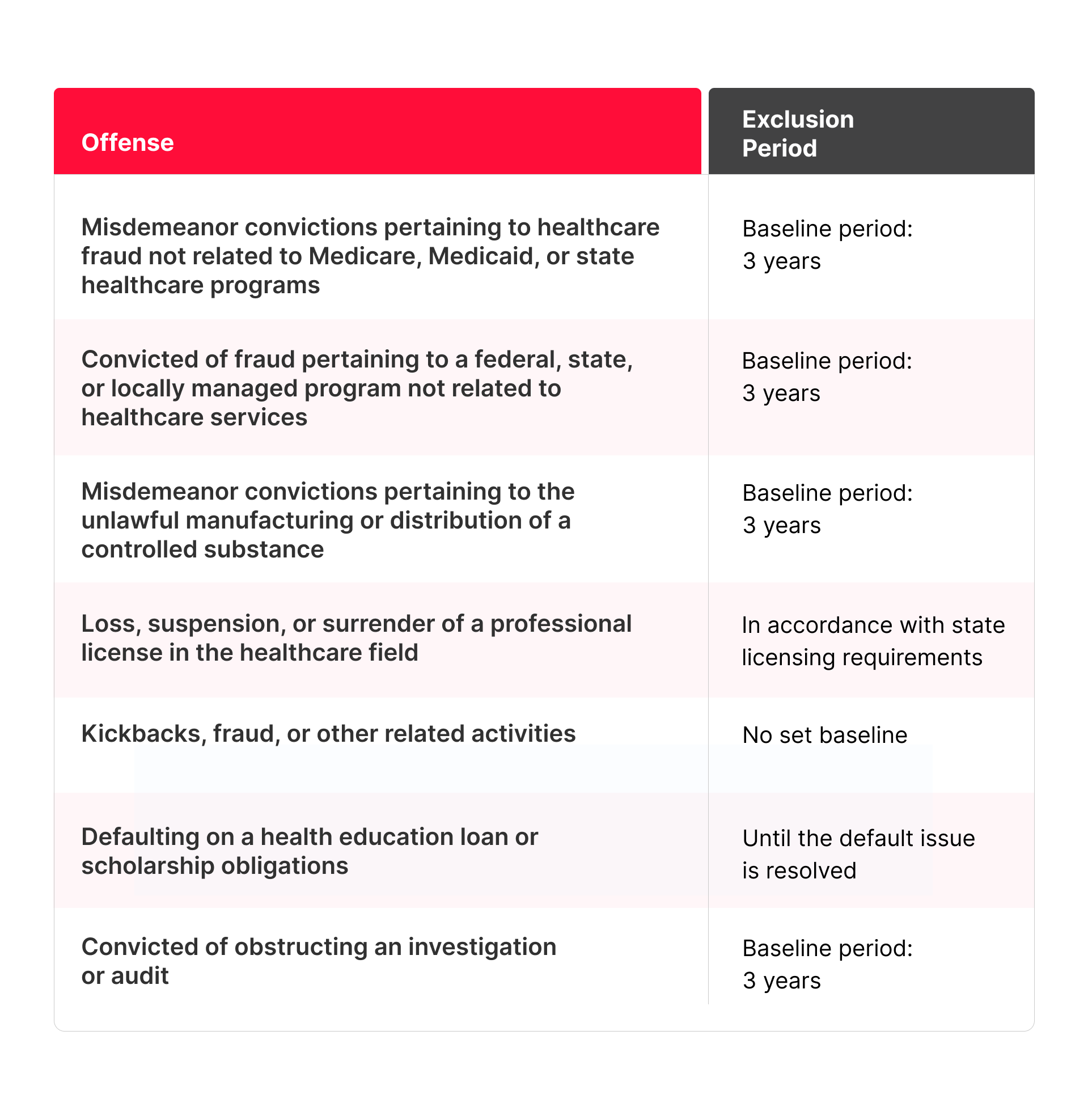

In the complex world of healthcare, OIG sanction checks are non-negotiable. These checks are far...

As an organization in the healthcare industry, remaining in compliance with the rules and regulations pertaining to the OIG exclusion list is a must. Failure to do so could lead to hefty fines or eliminate your ability to file claims with the Medicare and Medicaid.
It’s critical that your organization understands how the OIG exclusion list works and what its responsibilities are.
Here’s a look at some key points pertaining to the OIG exclusion list.
The Department of Health and Human Services’ Office of Inspector General (OIG) is tasked with investigating potential fraud, abuse, and other crimes. If individuals or entities are convicted of a certain offense, the OIG can prohibit them from working or doing business with federally or state-funded healthcare programs for a set period.
When this happens, the OIG can place these offenders in a database known as the List of Excluded Individuals and Entities (LEIE).
As a healthcare provider, it’s crucial to understand the importance of the OIG exclusion list and how to use it to keep your organization in compliance with federal and state regulations. Otherwise, you risk facing hefty fines and other penalties.
Keep reading to learn more about the OIG exclusion list and how it impacts your hiring and contracting practices.
Here’s a look at the top things you should know about the OIG exclusion list.
Key Takeaways
|
The OIG exclusion list is a record of individuals and organizations that aren't allowed to participate in any federal healthcare programs in accordance with the Social Security Act.
There are numerous reasons a person or entity may be put on the OIG exclusion, such as insurance fraud or patient abuse. Once on the list, the excluded individual or business can't work with a healthcare provider receiving Social Security funds in any capacity, including employees, contractors, suppliers, and volunteers.
The OIG exclusion database includes identifiable information, such as:
This list doesn't provide information pertaining to the length of the exclusion period. However, names are added and removed from this list on a monthly basis.
Any healthcare provider or other business that receives funds through the Medicare and Medicaid program is forbidden from employing, contracting, or doing any other type of business with any person or business on this list.
It's the healthcare provider’s role to monitor this database on a monthly basis to ensure compliance.
Recommended Reading: Your Must-Have Guide to Healthcare Background Checks
There are a number of reasons the Office of Inspector General may add a person or entity’s name to the exclusion list. These offenses typically fall under mandatory or permissive exclusions.
Those convicted of mandatory exclusion offenses are automatically added to the OIG’s list due to committing specific crimes related to providing or receiving healthcare services. In fact, the law requires the OIG to place these offenders on the exclusion list for a set period.
Here’s a look at some examples of mandatory exclusions and the required period for which they must remain on the list.

Permissive exclusions are done at the discretion of the OIG. These could include those convicted of misdemeanor-level, healthcare-related crimes or loss of a professional license.
However, there are a number of reasons the OIG can decide to place a person or entity on the LEIE list. The table below takes a look at some of these reasons.
It’s important to note that an excluded individual or entity’s name remains on this list until the exclusion period ends and the offender requests their name be removed.

Here are the key benefits of checking the OIG exclusions list on a monthly basis.
Healthcare providers that receive funds through Social Security or any state-funded healthcare program are prohibited from working with individuals or entities on the OIG exclusion list. This includes employees, volunteers, contractors, vendors, and any other related parties.
Again, it's the healthcare provider’s responsibility to frequently check the OIG list to ensure compliance.
Working or employing just one person or business on the exclusion list could damage your organization’s reputation. This is especially true if this relationship leads to another instance of fraud or illegal activity.
Instead, making sure you only work with and employ individuals, contractors, suppliers, and vendors who aren’t on the OIG exclusion list can help your organization build a sense of trust in the workplace.
Most importantly, frequently checking the OIG exclusion list can keep your patients and workers safe. After all, you don’t want someone having access to your patients, equipment, or supplies that could diminish the quality of care your organization provides.
Working with a party on the OIG exclusion list can result in hefty fines and penalties for your business. These fines could be as high as $20,000 per claim or three times the amount of the damages.
Additionally, federal and state healthcare plans may deny any claim related to OIG exclusion list compliance issues.
In extreme cases, your organization could be added to the OIG exclusion list for working with any excluded parties while receiving federal or state healthcare funds.
Recommended Reading: Your Guide to Healthcare Sanctions Background Checks
As a healthcare provider, you can't claim ignorance or that you didn’t know the rules pertaining to the OIG exclusion list or the names on it. This claim won't protect you from fines and penalties.
Instead, it’s important to take proactive measures to ensure compliance. Here are some tips to help you remain in compliance and avoid penalties.
The OIG adds and removes names on the exclusion list on a monthly basis. It’s highly recommended to check this list monthly to ensure your organization is still in compliance.
You should also check the OIG exclusion list when hiring a new employee or working with a new contractor, supplier, or vendor.
Unfortunately, the OIG exclusion list isn't the only database you need to worry about. Each state has its own exclusion database, as do some other governmental agencies.
It’s important to determine which various exclusion lists are relevant to your business operations, such as:
Compliance with the Social Security Act can be quite complex and time-consuming. It’s crucial for your organization to have a plan in place to frequently monitor your current employees and entities you work with, as well as new ones you bring onboard.
In addition to determining which exclusion databases your organization should track, you also want to set specific policies. These policies should clearly define who's responsible for tracking this information and the frequency of monitoring each database.
This all may seem a little overwhelming. However, there are tools you can use to streamline the exclusion screening process.
For instance, exclusion screening software allows you to quickly compare the names and details of your workers against various exclusion databases. Using this type of software can significantly reduce the time you spend screening new hires, current workers, and other entities while simultaneously improving outcomes.
Exclusion screening software eliminates the need for your team to manually check each employee with each relevant database. Instead, this software can handle this process in just a matter of seconds.
When you hire a new employee, you can simply enter their information into the exclusion screening software to ensure their name and information aren't on any lists. This software also regularly monitors these databases to ensure no current worker’s name was added to the exclusion list.
Exclusion and sanction screening software offers a number of benefits, including:
If you're a healthcare provider, it’s critical you remain in compliance with all aspects of the Social Security Act. Otherwise, you risk receiving a hefty fine or no longer having the ability to work with federally or state-funded healthcare programs.
Fortunately, exclusion screening software makes this process quick and easy while ensuring compliance.
Recommended Reading: Sanction Screening: A Tool for Safer Healthcare
The OIG exclusion list is designed to keep both patients and healthcare providers safe. To protect your patients and remain in compliance with the Social Security Act, regular exclusion list screening is critical.
At PreCheck, we understand the importance of the OIG exclusion list and your desire to remain in compliance. We also realize how tedious and time-consuming manually checking this list can be for your team.
To help with monitoring, our SanctionCheck exclusion screening software can streamline this process and provide accurate results.
Learn more about how our software can help your business remain in compliance. Speak with one of our experts today.

In the complex world of healthcare, OIG sanction checks are non-negotiable. These checks are far...

As PreCheck’s Principal Consultant for Sanction Screening, I work with healthcare compliance...

Healthcare organizations have a duty to protect their patients from harm. Whether you work for a...